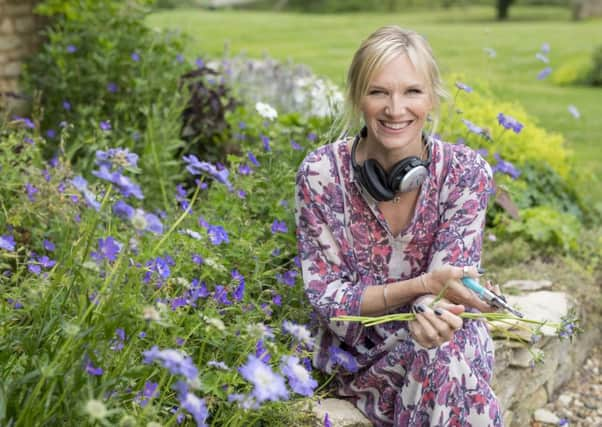How to create space outdoors to enjoy sound of nature


When Radio 2 presenter Jo Whiley switches off from her busy broadcasting career, she’s frequently found tuning in to music of a different kind.
“Music and gardening are my two big passions,” she explains. “When I’m gardening, I consciously switch off the radio and completely immerse myself in the sounds of the garden.
Advertisement
Hide AdAdvertisement
Hide Ad“Sound can have such a huge effect on people’s emotions. In the same way that someone may blast out a feel-good tune to lift their mood, the tranquil sounds of a garden can make you completely relaxed. Sound plays a big part of my life and my garden can provide a completely different musical backdrop compared to the studio.”
Whiley, 51, who lives in an 18th century barn conversion in a village in Northamptonshire with her music executive husband, Steve Morton, and four children, has transformed her garden into a musical paradise, featuring insect-friendly planting, wind chimes and water features.
The garden is sectioned off into different areas and features a rose garden, a veg patch, a main lawn with bordering flower beds, a rockery and a stream flowing underneath a bridge before you reach the open fields at her back gate.
“I have a bird table which sits on the patio and this is where we enjoy all sorts of birds chirping. We have resident robins, thrushes, herons, woodpeckers and even kites.”
She has also gone for planting that encourages beneficial insects, and has placed insect hotels and bee houses around the garden.
“We live in a barn conversion and are very aware that we are the temporary occupants and it’s the wildlife who really own the place. I hope our garden brings them as much happiness as it does me.”
Whiley has teamed up with experts from Wyevale Garden Centres (www.wyevalegardencentres.co.uk), offering tips to help gardeners create their own sounds of summer.
Create a buzz
To attract bees and other pollinating insects, mix up herbaceous perennials, annuals and biennials which flower at different times. Lavender, wild geranium and salvia, hollyhocks, foxgloves, daisy-like flowers including asters and heleniums will all be a magnet for bees.
Herb haven
Advertisement
Hide AdAdvertisement
Hide AdGrow herbs like rosemary, lavender, sage, oregano and thyme which attract bees, butterflies and a host of other insects. If you leave some herbs to flower, you’ll also be providing a rich food source for these insects.
Tune into birdsong
Bear in mind that birds need four things – something to eat/drink, somewhere to shelter, somewhere to wash and somewhere to breed. Grass, trees, shrubs and water are essential. Hedges, bushes and shrubs are perfect hiding and perching places for birds and provide food like berries, fruit and insects for them to eat. Thoughtfully placed bird boxes make crucial spots for nesting.
Make a splash
Garden ponds create ideal breeding conditions for frogs, newts, and toads and attract fascinating insects like the skater, water boatman and dragonflies. Enjoy the gentle croak of the amphibians and listen to birds, insects and other animals.
Rustle up sounds
After a busy day, the rustling of leaves can create an air of tranquillity. Tall grasses like miscanthus and greater quaking grass make a lovely rustling sound, even in gentle breezes; as do fine-leaved trees like birch and robinia. Bamboo makes a lovely hollow knocking sound when it bumps together and bigger canes can be turned into wind chimes.